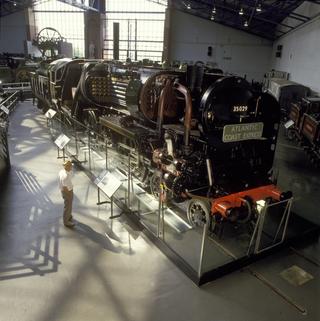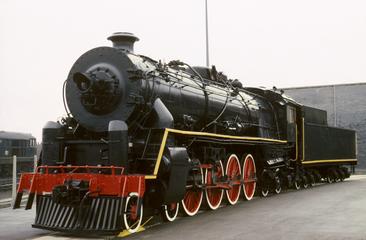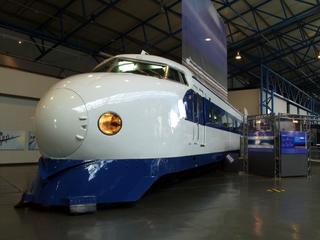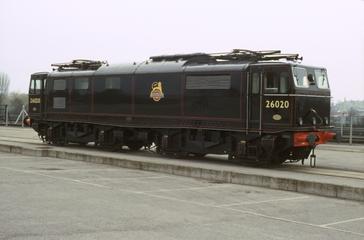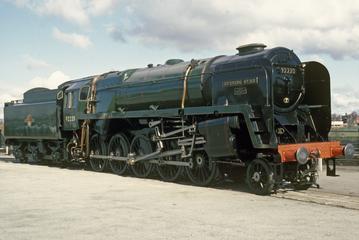
Great Northern Railway 4-2-2 locomotive Stirling Single
















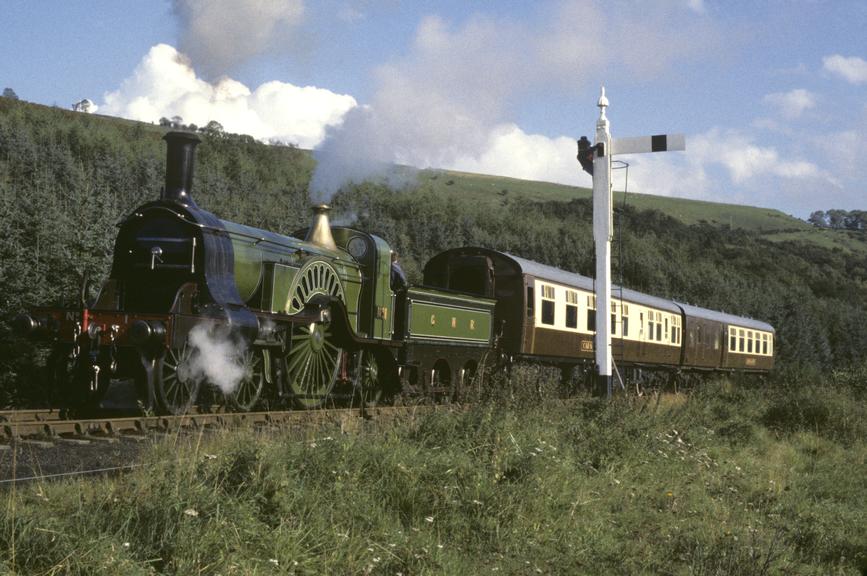
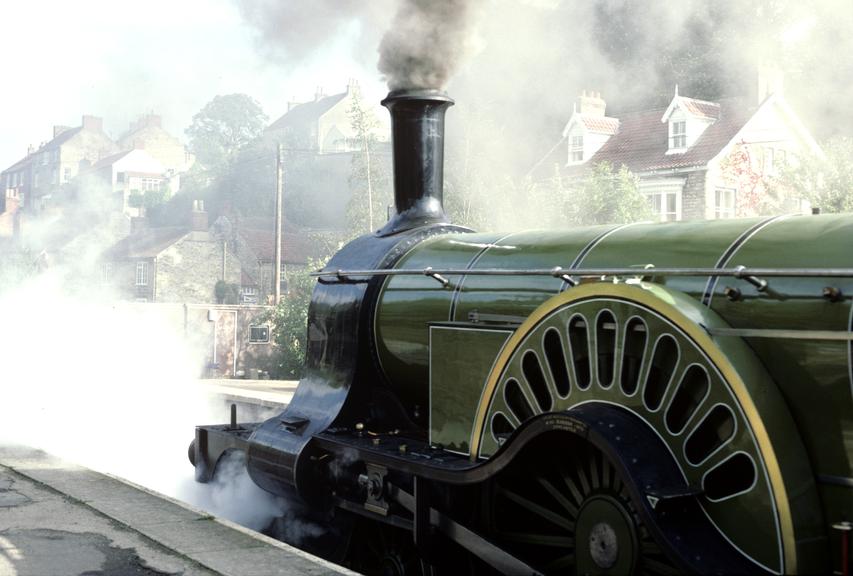
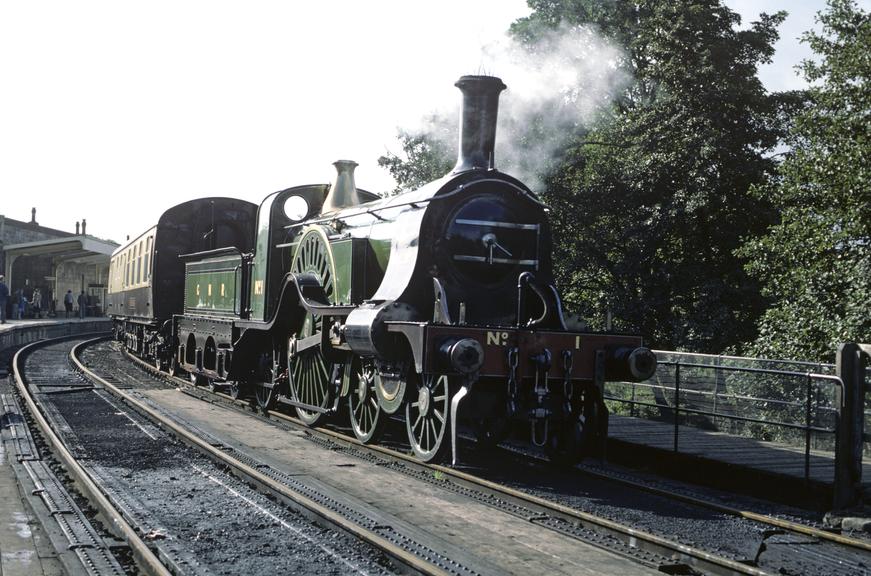

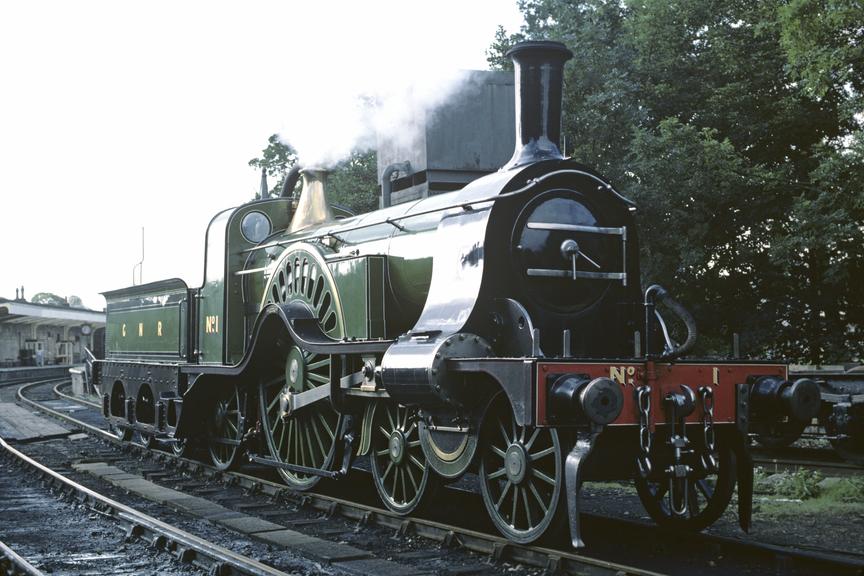

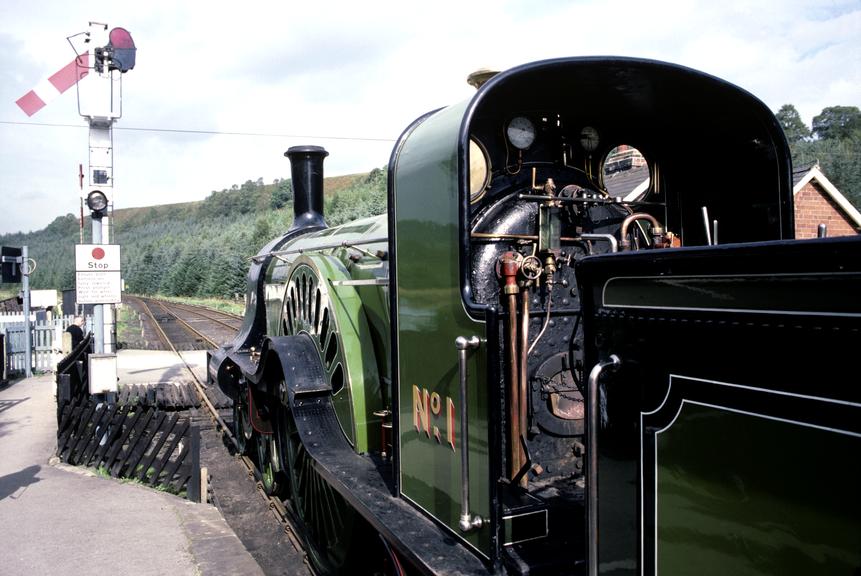




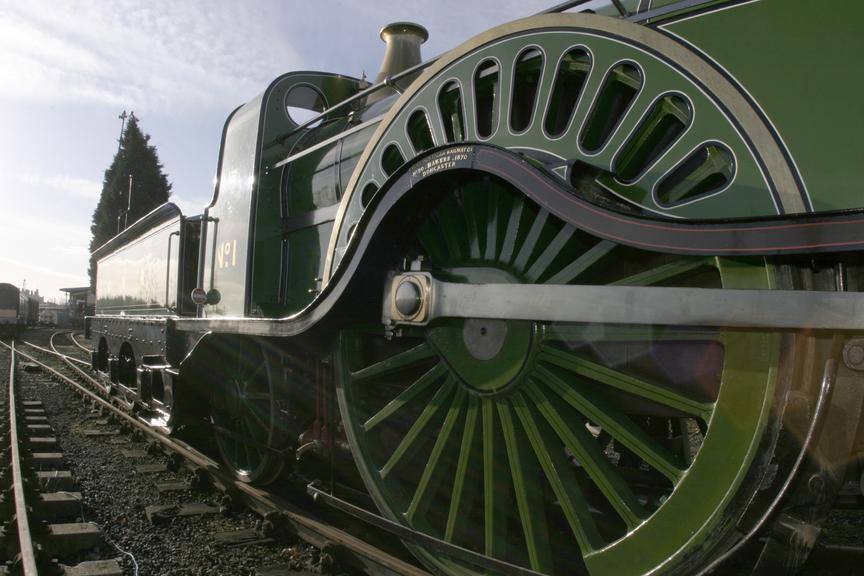

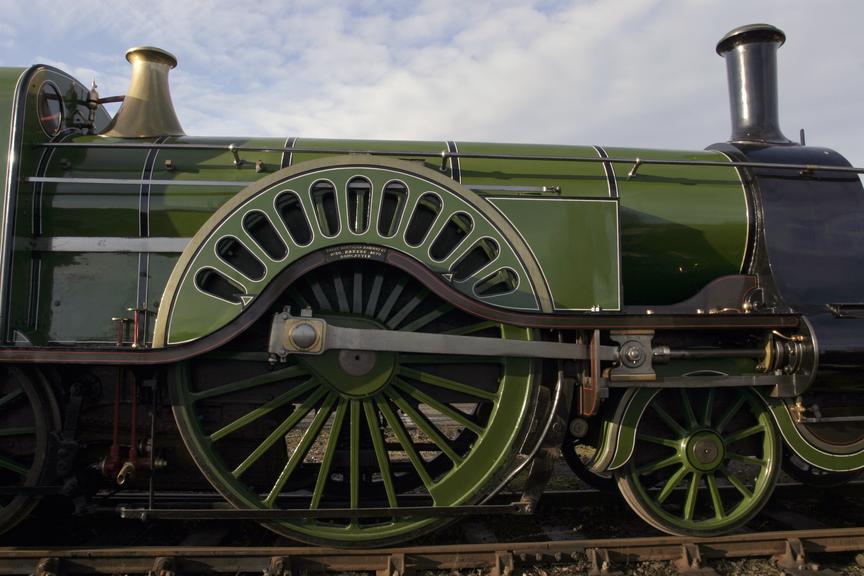
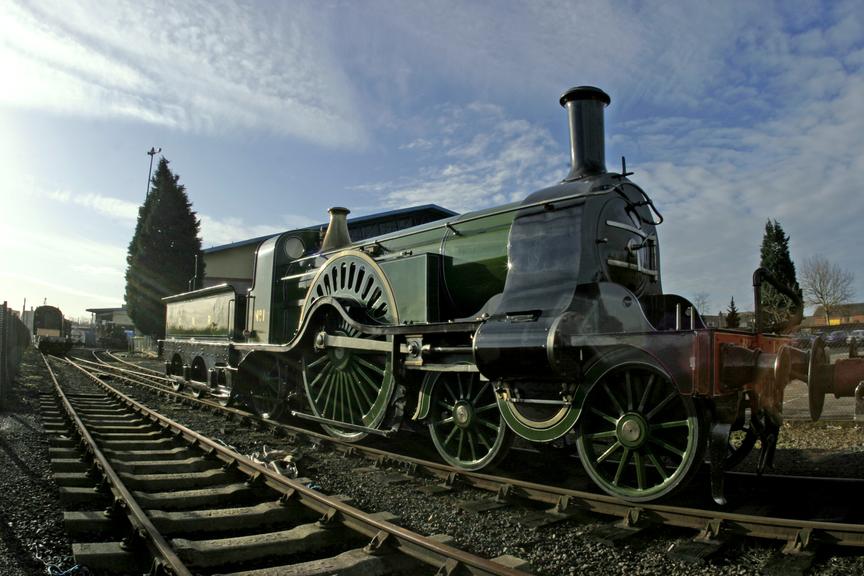
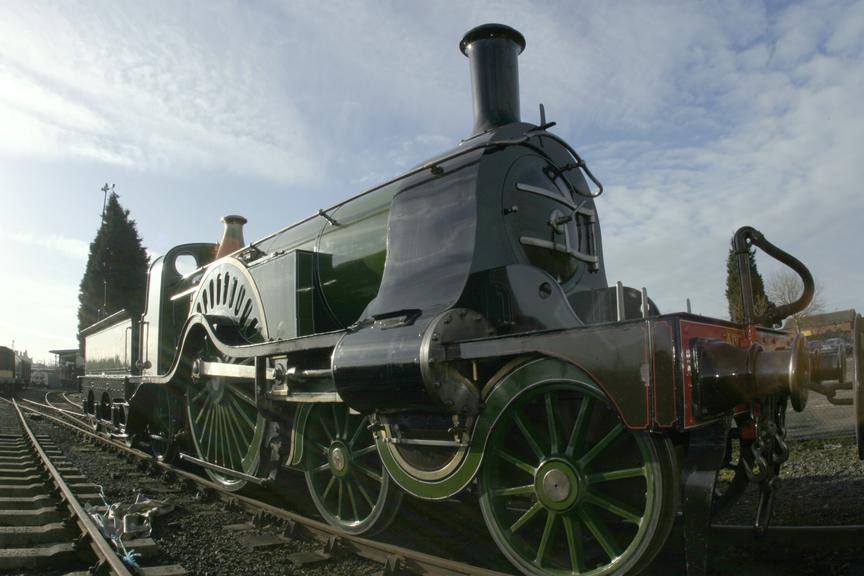
Steam locomotive and tender, Great Northern Railway, 4-2-2 No 1, designed by Patrick Stirling, built at Doncaster in 1870, withdrawn in 1907.
The Great Northern Railway (GNR) ‘8ft Singles’ were a type of steam locomotive designed for express passenger work between London King’s Cross and York by Patrick Stirling. It is characterised by a large single driving wheel allowing it to haul trains of around 150 tons at an average speed of 51mph while reaching speeds of up to 85mph and over with lighter loads. Completed at Doncaster Works in 1870, No 1 was the prototype of a fleet of 53 ‘Singles’, the last being built in 1895.
Stirling chose a large wheel diameter to improve mechanical reliability during fast running as wheel movement amplified the effect of each piston stroke. The weight of the wheel also improved adhesive grip on the rails. The use of such a large wheel posed a problem, as inside cylinders and connecting rods would have meant mounting the boiler at an unacceptably high pitch. Stirling therefore chose to adopt outside cylinders, easing access for routine maintenance.
Two-cylinder locomotives could ‘waddle’ along the track and so stability while running was achieved by mounting the cylinders in a horizontal position, the resulting overhang at the front of the locomotive being supported on two axles. A domeless boiler with round-topped firebox was adopted for simplicity of construction, and the locomotive exterior was kept clear of clutter. Disadvantages of the design included a lack of room for a larger boiler, while the weight of the driving wheels could cause rails to break.
The GNR ‘Singles’ took part in the ‘Races to the North’ of 1888 and 1895, which were conducted unofficially to capture public attention by establishing the fastest route between London and Scotland. Their speed and status as the GNR’s principal express passenger locomotives throughout the period guaranteed their participation.
Trains were getting heavier by the end of the century, and there was little scope for improving the ‘Singles’. Stirling’s successor, Henry Ivatt saw the need for larger, more powerful locomotives and introduced the Class C1 ‘Atlantics’ in 1898. The ‘Singles’ were increasingly relegated to secondary duties before being withdrawn from service. GNR No. 1 was withdrawn in 1907, although the last of the type was retired in 1916.
Details
- Category:
- Locomotives and Rolling Stock
- Object Number:
- 1975-7014/1
- Materials:
- steel (metal), copper (metal) and glass
- Measurements:
-
overall: 15545 mm x 2464 mm, 38000 kg
- type:
- steam locomotive
- credit:
- British Rail, Clapham
